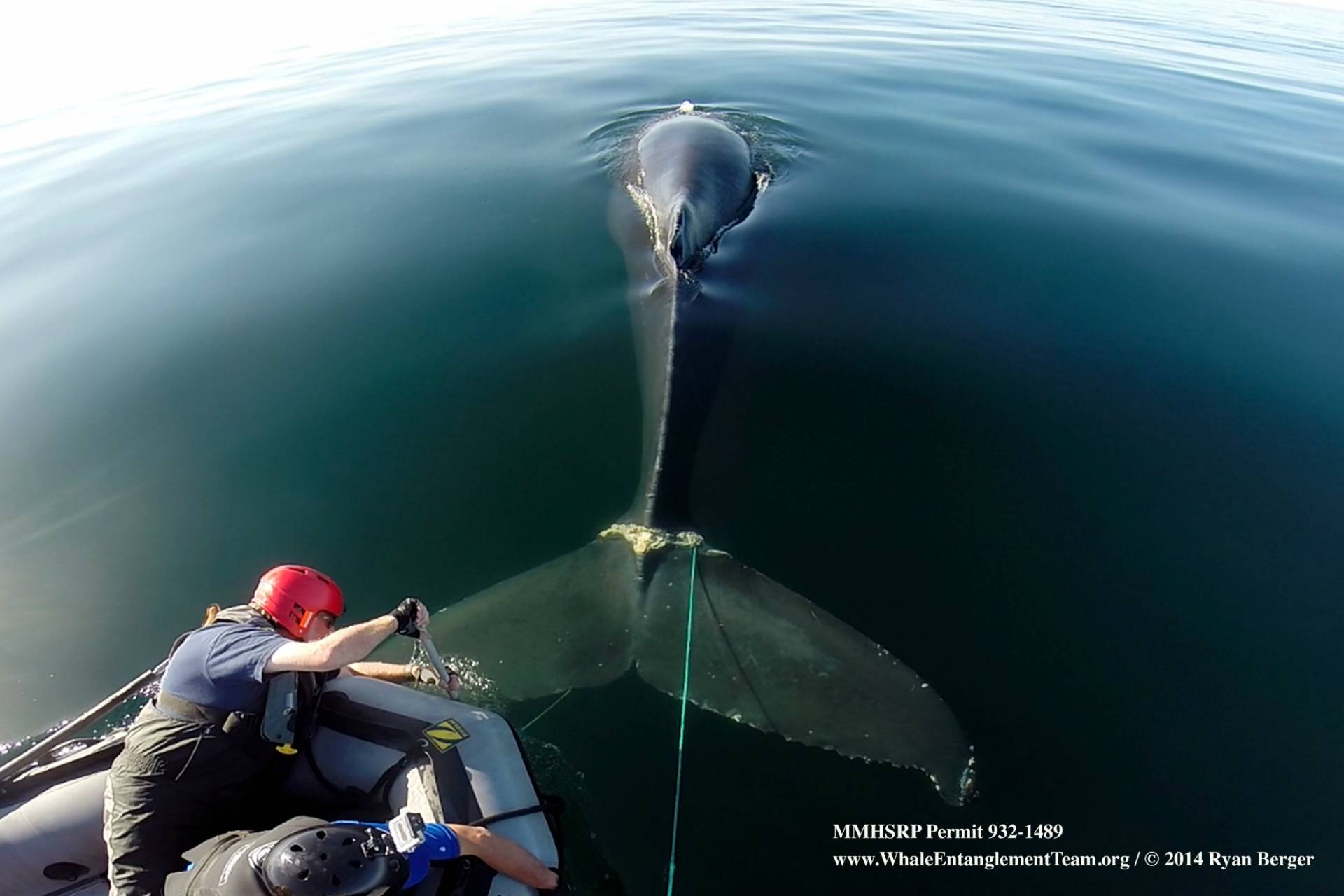Rebecca Lewison, a biology professor at San Diego State University, who was not involved in the research, said in an email the paper is “an exciting example of the type of data integration and analyses that are needed to manage ocean resources sustainably given current and projected changes in the ocean.”
NOAA tracks the number of whales entangled each year, and prior to 2014, Pacific Coast whale entanglements numbered about 10 per year on average. But they jumped to 30 in 2014 and skyrocketed to 53 in 2015, then 56 in 2016. The numbers dropped the next two years but were still high historically.
The spate of deaths prompted the Center for Biological Diversity to file a lawsuit against the California Department of Fish and Wildlife for insufficient regulation of commercial crabbing fleets. A settlement reached in March 2019 allows for more regulations and a potential end to the entire season if endangered whales become entangled.
The crisis also prompted the formation of the California Dungeness Crab Fishing Gear Working Group, comprised of scientists, fishermen and managers who can share information to reduce entanglements. This year, after aerial surveys revealed large numbers of whales in crabbing waters, the industry pushed to delay the start of commercial season to protect them.
Santora, a science adviser for the group, believes the working group can be a model for other geographical areas, and that improved ocean monitoring and swift communication between stakeholders will be key to keeping entanglement numbers low in the future.
“We’re seeing the same problems on the East Coast for right whales,” Santora said, “with changes in ocean conditions, changes in the whale’s prey, resulting in a redistribution of the whales so that they are becoming more entangled with lobster gear. It’s happening globally. We need to have new tools to deal with this.”
Lewison agrees: “This work demonstrates clearly why we need flexible and adaptable management approaches.”
Dynamic ocean management strategies, she explains, help fisheries managers, industry and the conservation community to “think retrospectively, to evaluate what went right or wrong from a management perspective, and also think proactively, to forecast what situations are likely to occur in the future.”
Jon Brooks contributed to this post.
